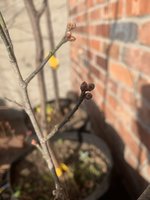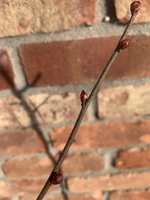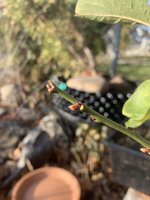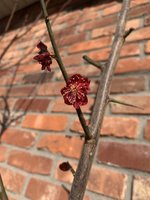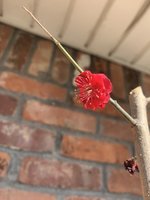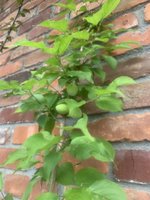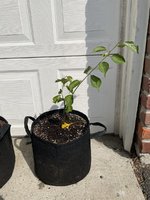@Bonds Guy - in your 5/22 post, you said you brought your Rosemary Clark indoors for a week, then put it back outdoors, then it died. According MSU just 48 to 72 hours at 70 F can undo winter hardiness. If after the time indoors the Rosemary Clark experienced a frost or a freeze, that is likely what killed it.
The MSU data was from fruit trees, apples, peaches, cherries and blueberries, important crops in Michigan. About a decade ago, there was a 5 day warm spell in late January, with back to back daytime highs in the low 70's, then a return to "normal" January and February weather. There was a near total crop loss of cherries, and peaches, and a serious reduction in apples and blueberries that summer because flower buds were winter killed by the cold following the warm spell. This was the southwest region of Michigan, where at the time I was a partner in a blueberry farm. I was attending ag extension meetings for the area, and saw the data from just a couple years before I "bought the farm". Oh, I have since "sold the farm", after a mere 5 years I decided to retire again.
Cold hardiness takes 2 to 3 months of steadily decreasing night temperatures for a tree to make the metabolic adjustments required for cold tolerance. This includes decreasing moisture content of cells, raising sugar content of cells, and many other changes. Certain hormones are developed to prevent growth from beginning. Then through the winter these hormones keep the tree dormant. Warm spells in autumn, will not trigger the trees into growing, because these hormones keep the trees dormant. But as the winter progresses, these hormones break down. Late winter, there are no longer hormonal controls preventing growth. This is what is meant when a tree has had its "vernalization", or "winter chill requirement" satisfied. Once the 8 or 12 week requirement is satisfied, any warm spell and the tree will loose its cold weather adaptations, and begin growing. Then a frost happening after this warm spell can be fatal.
Most native to North America species, have longer winter chill requirements than species from Japan or China. The result is, the non-natives will get "tricked" by our late winter thaws into loosing cold tolerance a bit early, while our native trees will sit dormant and not notice brief warm spells.
or in this case, your bringing the tree indoors served to "trick the tree" into thinking winter was over. Then you put it back outside, and the frost or freeze killed it. In the future, bring trees in from the cold only for the hour or two it takes to enjoy them and take pictures, then get them outdoors before night fall.
Or if you bring them in to force early bloom, they must go into an above freezing greenhouse until danger of frost has passed. This point is not obvious, even seasoned bonsai growers have made this mistake.
In Milwaukee, there is always a "Winter Silhouette Show", in late January or early February, it used to be at the Mitchell Domes before they closed for reconstruction. There was one grower who brought in a beautiful tree, it spent the 72 hours in the Domes, then they put it back outside in a typical Wisconsin February. The normally hardy tree died. The chairman had assumed the person who owned the tree was going to put it in their frost free greenhouse, but they didn't think about the loss of winter hardiness, so they didn't use the greenhouse, even though it was right there. At least in recent years, the organizers of winter silhouette shows have been warning exhibitors to greenhouse their trees after the show. That they won't be fully hardy after the show. But every time there is an election for new board members, there is always the danger this little piece of "institutional memory" gets forgotten.
]]
).


